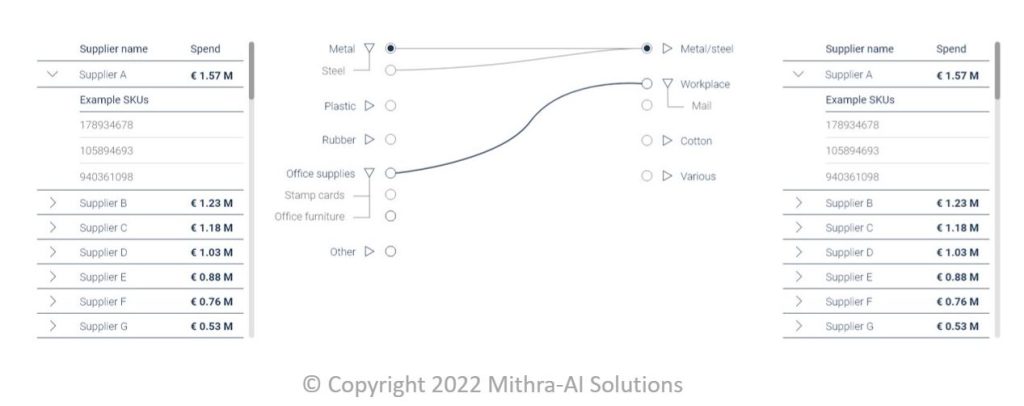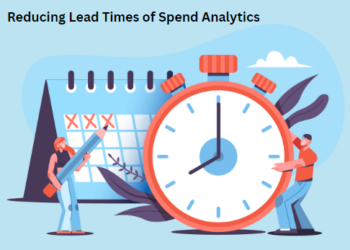Using A.I. to verify & improve your spend framework and accuracy
The Challenges Businesses Face
For any-size organization with the intention to manage and orchestrate their spend, the very fundamentals are access to those spend and a framework (classification) to associate the spend to. We are all aware of challenges on data-access but today want to dig deeper into the former – the spend framework or classification (also goes by spend taxonomy/hierarchy). In this use case we refer to it as spend framework.
Usually there are two states of being: either there is an existing spend framework (complete or incomplete) in the organization that will be continued to be used or there is none and so the framework needs to be defined and agreed upon. Most professionals know that there is no right or wrong with a framework as long as it enables accurate visibility to spend and therefore building and monitoring strategies. That means in the majority of cases professionals choose to avoid investing enough time in reviewing existing frameworks or the newly developed, being afraid to get into never ending discussions and organizational politics especially if there is not a strong governance and RACI in place. The unfortunate result in majority of the time is poor, incomplete, and vague spend frameworks that full organization is not aligned and therefore not willing to utilize which means there will be multiple frameworks for the same spend in the same organization…
What Can Be Done?
There are a lot of reasons for organizations to be sidetracked here, but there are only a few critical elements: The framework is supply source driven, all components are distinct and clear also across other stakeholders and finally it is close to existing transactions (reality) in other words, it not written in ideal world. We have recently worked with a big brand in manufacturing who were preparing to revamp their procurement tools and processes. As a result, they decided to design their spend framework from scratch. Mithra-Ai solutions partnered to make this challenge a successful exercise in span of couple of weeks instead of quarters. Mithra-Ai “taxonomy builder” is purposefully designed to solve this challenge for organization of any size.
The initial taxonomy has been submitted as well as spend transactions without any associations. Our cloud solution did at the very first step a health check on the spend framework and pointed out where procurement team should review, revise or provide a distinct definition. At the second step, tailored algorithms designed for this client generated the first proposed allocation of spend data to the revised taxonomy to show-case the first outlook to procurement teams in less than a week. This allowed the procurement team to review, provide feedback, and apprehend/ revise their taxonomy in the next week.

On the second iteration, given the power of applied Ai, they could see the delta between their ideal framework and what is happening day in and day out in business and were able to adjust and match these together very quickly. As this exercise, thanks to dedicated technology was 100% data driven, it helped the procurement team to discuss their findings and proposals with other stakeholders like finance marketing and operations. The spend framework has been established so team could take the more important step of communication and embedding it in their several processes and systems while being confident that any changes, feedbacks and simulations can take place and won’t be slowing progress at any cost.
Things to consider
Spend framework (or taxonomy) is the DNA of any organization in terms of their spend. While being unique, it will go through changes together with the organization (think of acquisitions, new product development and change in supplier’s service dynamics) and it requires a capability to take all feedbacks (internally and externally), simulate and adjust as needed while being that source of through for procurement, supply chain, finance and other stakeholders. Ignoring this fact causes fatal inefficiencies as well as masking key opportunities across the whole organization (not only procurement) to both manage spend as well as maximize innovation, service, and quality from their supplier base.
Turbocharge Category Strategy Execution
Turbocharge your category strategy execution & drive continuous business value Category owners invest significant time in stakeholder engagement, in data...
Rewiring Spend Analytics
Rewiring Spend Analytics - the New Era Procurement has more than ever to gain from advances in technology—and more to...






